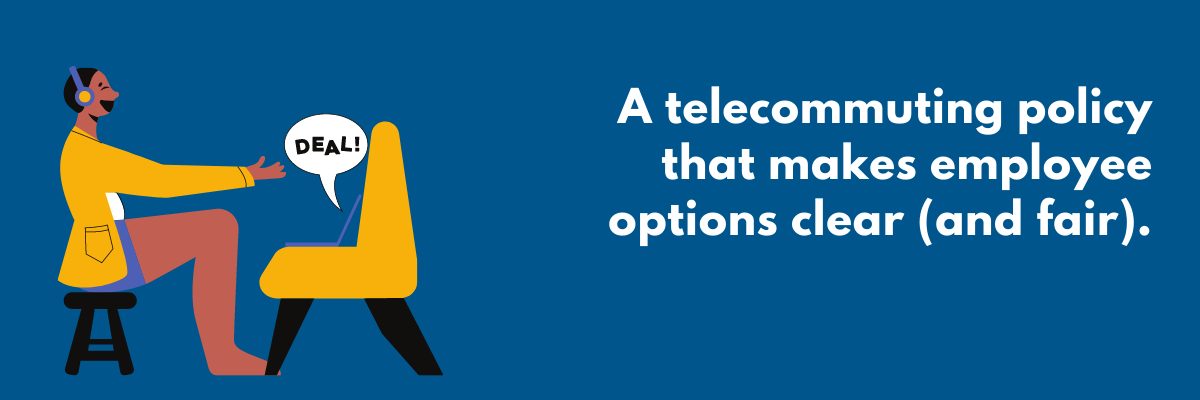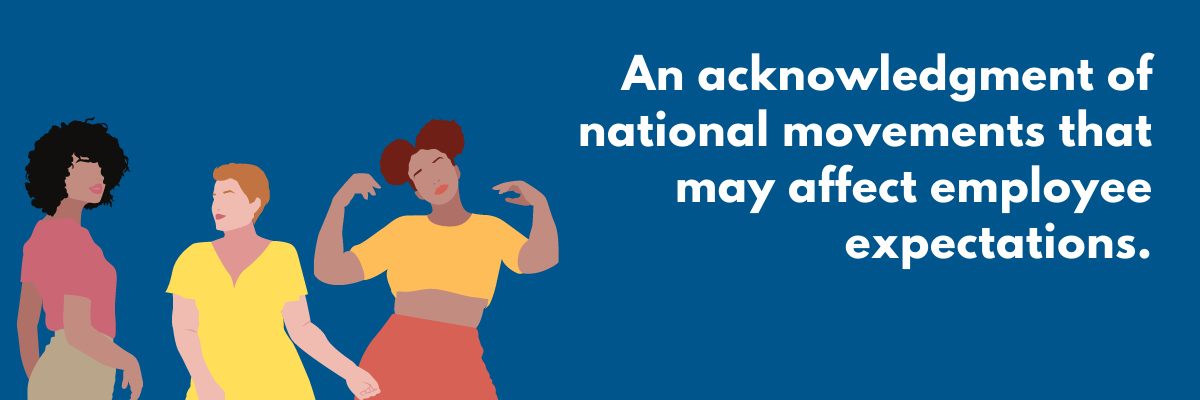Keeping up with your employee handbook: 5 topics to address now
Observant HR pros understand there may have once been aspects of an employee’s working life that didn’t have to be directly addressed in a handbook right away—issues covered by informal interactions, common sense, and the understanding that HR would eventually “catch up” to big new developments in the legal landscape.
There’s no room for error now. In an ever more litigious society that expects immediate reaction and response, your workers are applying that same standard to your policies. Tomorrow morning’s headlines on CNN could mean employees perceive their rights differently than the day before.
Consider this handbook checklist
How many of the following aspects of an effective employee handbook are unfortunately on your list of “to-dos,” and represent dangerous omissions that could catch you off guard? Attorney Anniken Davenport recommends you update your handbook immediately if you lack:

1. A telecommuting policy that makes employee options clear (and fair).
The coronavirus outbreak made it apparent that you won’t always have time to prepare for a situation in which people must work from home for varying periods. But beyond a health crisis, organizations must recognize that technology has made it possible for many workers to contribute from home, and their desire to telecommute will only increase from here.
What new job applicant to any white collar position isn’t thinking, “I wonder if I can eventually do two days per week from the basement?” Everywhere they look, they have friends and relatives claiming success with working remotely; sooner or later they’re going to ask, “Why not me?” While making no promises, your handbook needs to lay out who can telecommute and when.

2. An emergency plan for disasters, pandemics and mandated closings.
A quick click on Google News today demonstrates the need for such a plan in about two seconds. Wildfires, hurricanes, public demonstrations turned violent, organized sick-outs, and yes, sudden business interruptions due to Covid concerns—can you remember any time in history when then the range of unexpected events that can strike an office has been so great?
Make sure your employees understand what to do if they wake up tomorrow to inclement weather or chaos of a totally different kind. Pay special attention to your expectations for swift communication both ways.

3. A policy on nursing and milk expression.
“It pains me to have to say this every time I do a presentation like this,” Davenport told her attendees in a recent webinar on handbook preparedness, “but I have yet to see that employers are for the most part following the law.” Ever since the Affordable Care Act went into effect, it’s been mandated that new mothers must be given breaks to express and store breast milk, as well as a proper place for such breaks.
This law applies to nonexempt workers covered by the FLSA, and extends for a full year after a child’s birth. State laws may extend that coverage. The space provided by the employer cannot be a bathroom and it must be shielded from view and free from intrusion by co-workers or the public.

4. An acknowledgment of national movements that may affect employee expectations.
In her webinar, Davenport spoke of the circumstances leading up to the CROWN Act, which reflected workers’ growing awareness of hair discrimination. How many of us can honestly say we saw that movement coming and got ahead of the curve in the wording of our policies?
The best companies and HR departments don’t always wait for a court case to review their handbook. You can’t afford to be late when public opinion shifts dramatically against policies that can swiftly be deemed archaic and insensitive, especially with employee activism on the rise.
Go through your handbook for the specific reason of determining whether your organization has become tone-deaf to the trends and movements that are reshaping employee expectations—even if you haven’t come under direct pressure to bend to them yet. The pressure is likely coming.

5. An awareness of the most recent legal decisions.
From the Supreme Court to your state government, you must stay on top of the rules and laws that change the employment landscape. A particularly dangerous brand of oversight comes through a sadly common scenario: 1) A federal ruling or law goes into effect. 2) HR breathes a sigh of relief: “This now seems cut and dried.” 3) A state court or local law alters your obligation to follow the law, either extending it to you or absolving you from it—and no one catches the discrepancy. Meanwhile, you’ve been giving inaccurate guidance in your handbook.
Know the National Labor Relations Board’s latest guidance
It’s essential that private employers monitor the NLRB’s direction in order to keep your handbook current. Some examples of their recent attitude shifts:
“They don’t like blanket rules that say employees can’t be ‘disrespectful’,” Davenport informed her audience. This is because employees could construe such rules as banning protected criticism or protests against their treatment on the job.
“They don’t like rules that say ‘absolutely no cameras or recording in the workplace.’” You must able to argue that the negative effect on workplace safety or confidentiality outweighs employees’ rights to engage in activity protected by the National Labor Relations Act. Again, you must be aware of the possibility of a complaint by someone alleging you’re stifling the documentation of working conditions.
“They don’t like rules attempting to prevent people from talking about an investigation or a complaint that was filed.” As evidenced by the #MeToo movement, which brought so much publicity to the awareness of sexual harassment, it’s difficult to keep workers from discussing and debating issues that can even ensnare your own office.
In general, any policy attempting to require confidentiality during an investigation will only be seen as lawful during the limited span of that open investigation. You can only require confidentiality from its direct participants—employees who talk about the incidents that led up to it should not be punished.







